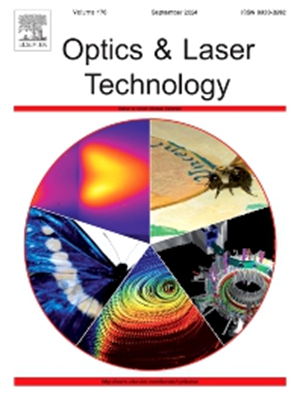IF 4.6
2区 物理与天体物理
Q1 OPTICS
引用次数: 0
摘要
红外与可见光图像融合(IVIF)旨在通过结合源图像的强度和细节信息生成融合图像。现有的 IVIF 方法通常依赖于人工定义的损失函数权重,缺乏对复杂场景的动态适应性。此外,单分辨率方法在捕捉多分辨率互补信息方面也受到限制。在本研究中,我们为 IVIF 提出了一个自适应损失权重和多分辨率增强框架,通过整合细粒度细节和背景纹理来提高对复杂场景的适应性。我们的方法引入了多分辨率细节增强(MRDE)模块,该模块在三个不同的尺度上处理提取的特征,以增强纹理细节。我们还提出了一种全息融合策略,该策略由两个模块组成:结构融合模块(SIM)和多分辨率纹理融合模块(MTFM),它们能有效地跨分辨率整合结构和纹理信息。此外,我们还提出了一种自适应加权动态平衡损失函数,可在训练过程中调整对纹理和结构的重视程度。广泛的实验证明,我们的方法优于最先进的 IVIF 技术,实现了出色的视觉平衡并提高了定量性能。本文章由计算机程序翻译,如有差异,请以英文原文为准。
Infrared and visible image fusion with multi-resolution enhancement and dynamic weighted
Infrared and visible image fusion (IVIF) aims to generate fused images by combining intensity and detailed information from source images. Existing IVIF methods typically rely on manually defined loss function weights and lack dynamic adaptability to complex scenes. Additionally, single-resolution approaches are limited in capturing complementary information across multiple resolutions. In this study, we propose an adaptive loss-weights and multi-resolution enhancement framework for IVIF, improve adaptability to complex scenes by integrating fine-grained details and background textures. Our approach introduces a multi-resolution detail enhancement (MRDE) module that processes extracted features at three distinct scales to enhance texture details. We also present a holographic fusion strategy composed of two modules: the Structural Integration Module (SIM) and Multi-resolution Texture Fusion Modul (MTFM), which effectively integrate structural and texture information across resolutions. Moreover, we propose an adaptive weighting dynamic balancing loss function that adjusts the emphasis on texture and structure during training. Extensive experiments demonstrate that our method outperforms state-of-the-art IVIF techniques, achieving superior visual balance and improved quantitative performance.
求助全文
通过发布文献求助,成功后即可免费获取论文全文。
去求助
来源期刊
CiteScore
8.50
自引率
10.00%
发文量
1060
审稿时长
3.4 months
期刊介绍:
Optics & Laser Technology aims to provide a vehicle for the publication of a broad range of high quality research and review papers in those fields of scientific and engineering research appertaining to the development and application of the technology of optics and lasers. Papers describing original work in these areas are submitted to rigorous refereeing prior to acceptance for publication.
The scope of Optics & Laser Technology encompasses, but is not restricted to, the following areas:
•development in all types of lasers
•developments in optoelectronic devices and photonics
•developments in new photonics and optical concepts
•developments in conventional optics, optical instruments and components
•techniques of optical metrology, including interferometry and optical fibre sensors
•LIDAR and other non-contact optical measurement techniques, including optical methods in heat and fluid flow
•applications of lasers to materials processing, optical NDT display (including holography) and optical communication
•research and development in the field of laser safety including studies of hazards resulting from the applications of lasers (laser safety, hazards of laser fume)
•developments in optical computing and optical information processing
•developments in new optical materials
•developments in new optical characterization methods and techniques
•developments in quantum optics
•developments in light assisted micro and nanofabrication methods and techniques
•developments in nanophotonics and biophotonics
•developments in imaging processing and systems

 求助内容:
求助内容: 应助结果提醒方式:
应助结果提醒方式:


